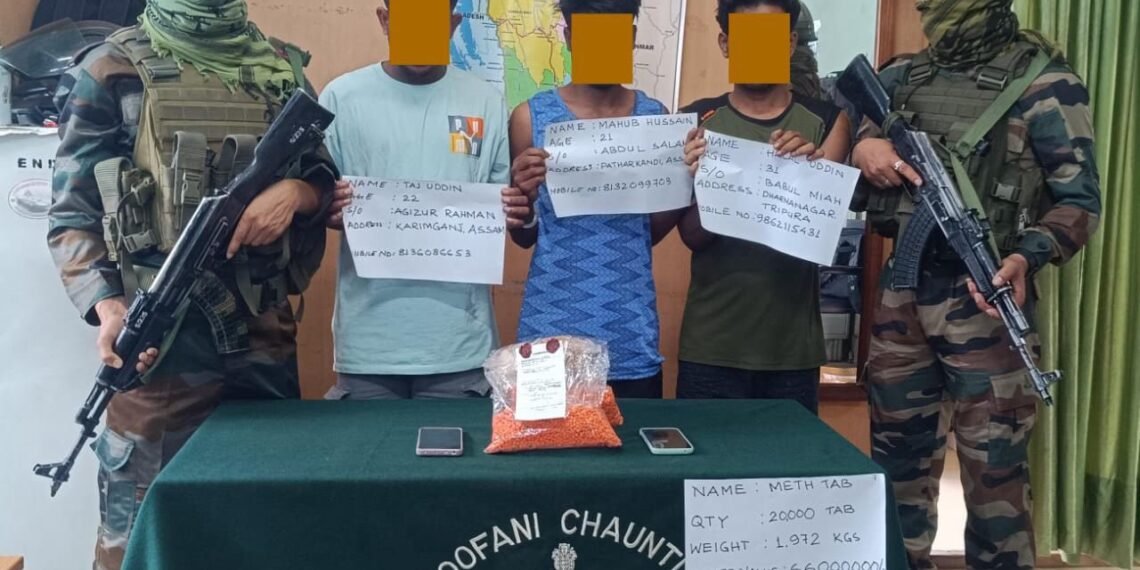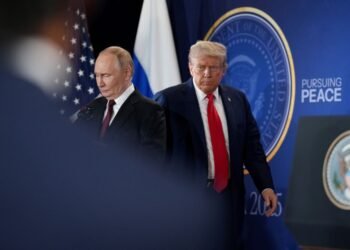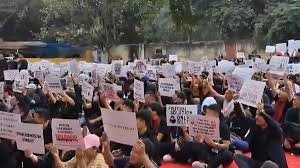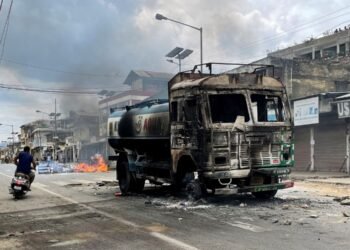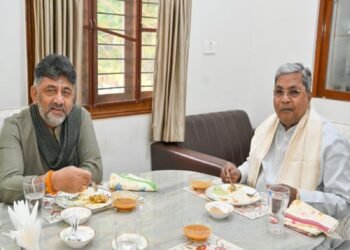Five accused, including a Myanmar national and residents from Assam and Tripura, were arrested during the raids. The seized meth is estimated to be worth over ₹13 crore in the international market, signaling an alarming rise in cross-border drug trafficking.
BY PC Bureau
July 25, 2025–Mizoram continues to reel under the pressure of a growing drug crisis as the Excise and Narcotics Department, in collaboration with the Assam Rifles, seized 8.63 kilograms of methamphetamine tablets in multiple operations. The seizures, made over Wednesday and Thursday, follow a worrying trend of increasing drug trafficking along the porous India–Myanmar border, particularly in eastern Mizoram’s Champhai district.
Officials confirmed the arrest of five individuals in connection with the seizures, including one Myanmar national, two residents of Assam, one from Tripura, and a local Mizoram resident. All were booked under relevant sections of the Narcotic Drugs and Psychotropic Substances (NDPS) Act, 1985, and produced before the respective district magistrates.
READ: KOHUR Seeks Justice for Myanmar-Kuki Detainees in Manipur
According to Peter Zohmingthanga, spokesperson for the Excise and Narcotics Department, the largest bust occurred on Thursday at Tualte village in Champhai, where officers confiscated 5.5 kg of meth tablets from a local resident. Later that day, another 1.9 kg was seized in Aizawl’s Tuikhuahtlang locality from three non-local suspects during a joint raid by the department and Assam Rifles.
A day earlier, a Myanmar national was apprehended near the border at Zote village, with 1.1 kg of methamphetamine in his possession.
Background: A Troubling Pattern Emerges
These latest seizures add to a growing list of narcotics hauls made over the past few weeks in Mizoram, which shares a long and largely unmanned border with Myanmar—an area increasingly being used as a corridor for smuggling methamphetamine, heroin, and other synthetic drugs into India.
In early July, Mizoram Police and Assam Rifles had jointly seized over 10 kg of heroin near the border town of Champhai. Days later, another operation in Saitual district led to the recovery of 2.8 kg of methamphetamine tablets, with two Myanmarese nationals arrested. Earlier in June, the Champhai–Zokhawthar corridor was flagged by enforcement agencies as a high-risk zone for narcotic infiltration.Bottom of Form
Back-to-back seizures in Mizoram:
Three Indian nationals were held with 1.97 kg of meth tablets worth appx ₹6.6 crore. The consignment was found hidden in their vehicle. The joint operation was carried out on 24 July by Assam Rifles, Aizawl Police and the State Narcotics Dept.… pic.twitter.com/MawHcd3MWE— Karishma Hasnat (@karishmahasnat) July 25, 2025
Security experts and law enforcement officials have long warned that the Golden Triangle—the opium-producing region where the borders of Myanmar, Laos, and Thailand meet—is spilling into India through Mizoram and Manipur, both states increasingly exposed to organized transnational drug syndicates.
Ongoing Enforcement and Humanitarian Challenges
While drug seizures are becoming more frequent, enforcement officers admit that efforts are often undermined by difficult terrain, limited border surveillance, and strained manpower. Champhai and surrounding districts continue to function as landing zones for traffickers, who move consignments deeper into the Indian mainland via Assam and Tripura.
At the same time, humanitarian concerns are rising around refugees from Myanmar, many of whom have crossed into Mizoram to escape political persecution following the 2021 military coup. While most stay in relief camps, some vulnerable individuals have been drawn—willingly or otherwise—into the narcotics trade, raising concerns over the intersection of displacement and organized crime.
The Mizoram government, while continuing raids and crackdowns, has also sought central assistance for improving border vigilance and strengthening inter-state intelligence sharing.
The latest series of seizures reflect not just isolated law enforcement success stories, but a deeper, more persistent challenge facing India’s northeastern frontier—where security, humanitarian protection, and criminal networks converge. With the synthetic drug economy thriving and border vulnerabilities exposed, authorities warn that the problem may worsen unless comprehensive, coordinated efforts are urgently scaled up.
Estimated Value of 8.63 kg Methamphetamine:
- In India (wholesale): ₹70 lakh to ₹1.5 crore per kg
⟶ For 8.63 kg: ₹6 crore to ₹13 crore - In Southeast Asia (e.g., Thailand, Malaysia):
$15,000 to $25,000 per kg (wholesale)
⟶ For 8.63 kg: $129,450 to $215,750 - In Western markets (e.g., U.S., Australia):
$60,000 to $200,000 per kg, depending on purity and market
⟶ For 8.63 kg: $517,800 to $1.7 million
(Approx. ₹4.3 crore to ₹14 crore in black market value)
| Market | Price per kg | Total for 8.63 kg | Approx. in ₹ |
| India (illicit) | ₹70L–₹1.5Cr | ₹6–₹13Cr | ₹6–13 crore |
| Southeast Asia | $15k–$25k | $130k–$216k | ₹1.1–₹1.8 crore |
| Western markets | $60k–$200k | $518k–$1.7M | ₹4.3–₹14 crore |
💡 Note: These are approximate values. Street value can increase drastically if sold in smaller quantities, especially in end-user markets like the U.S. or Australia.


